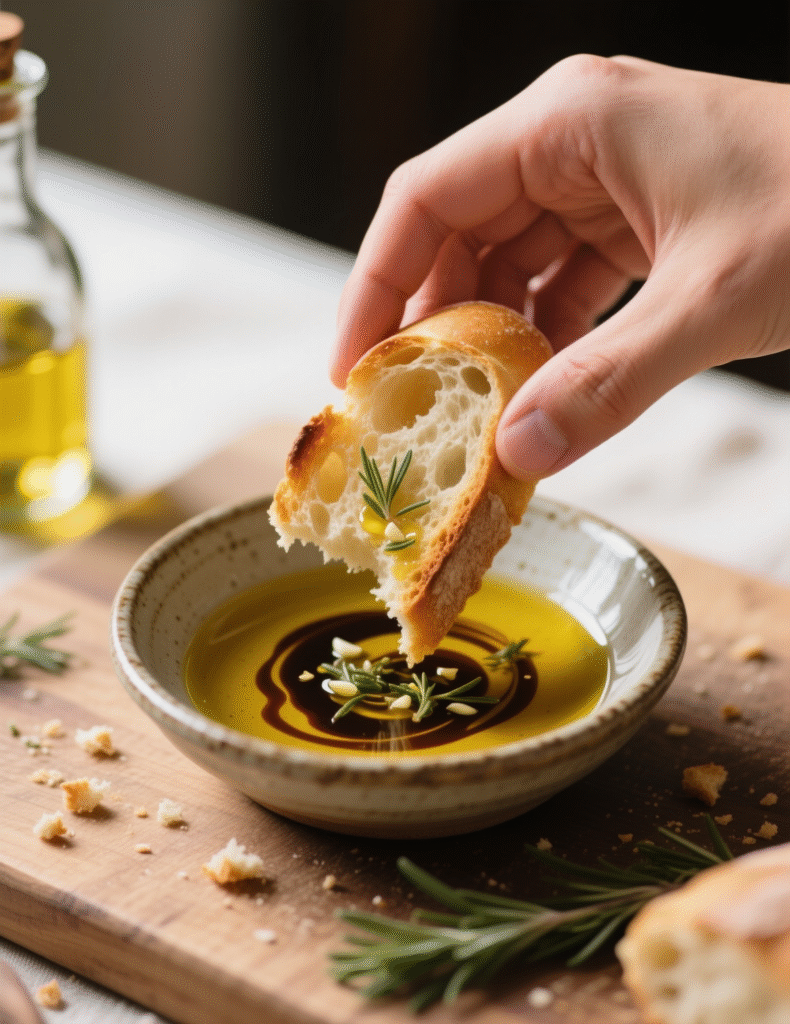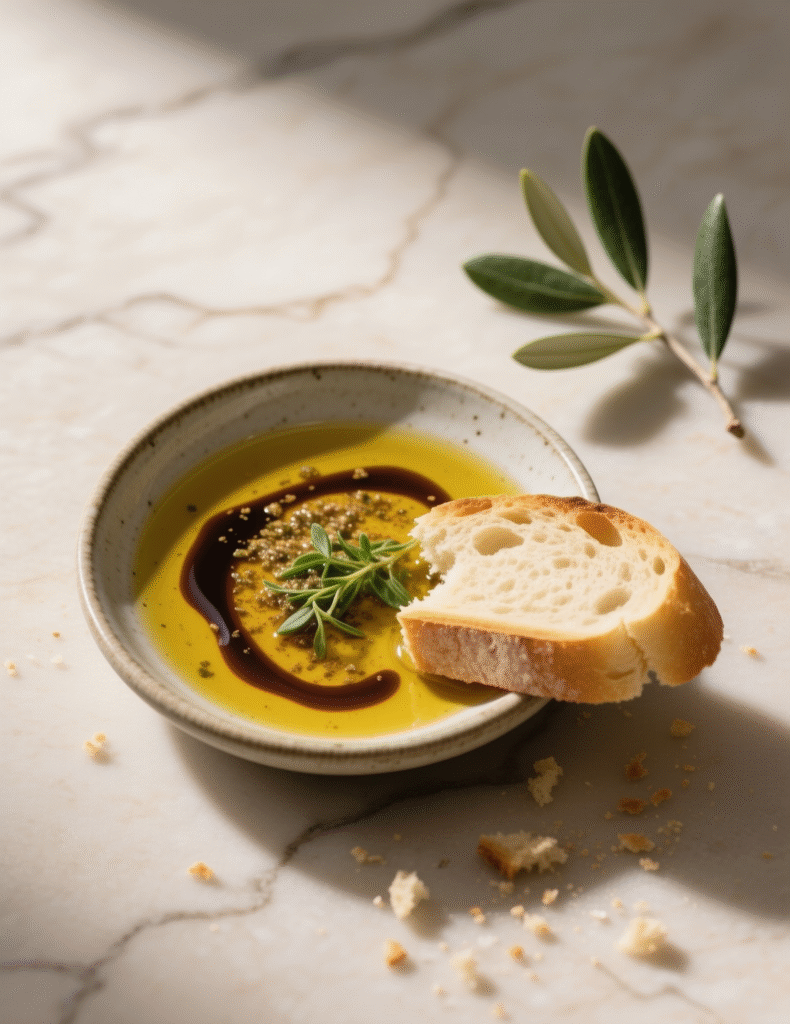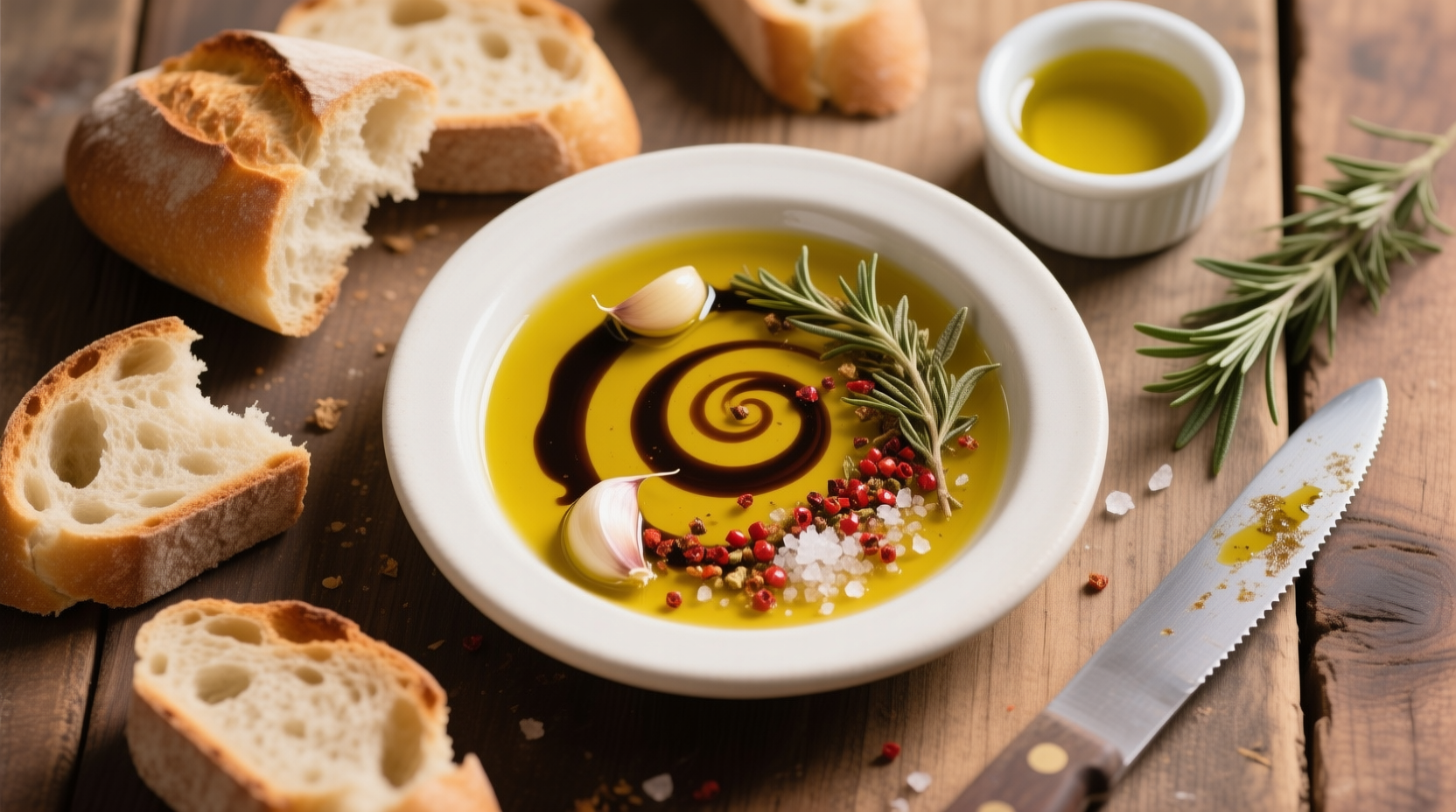There’s a quiet kind of magic in tearing off a piece of warm, crusty bread and dragging it through a golden pool of olive oil. It’s rustic. It’s intimate. And when done right, it’s as soul-satisfying as any five-star entrée. But what makes an olive oil dip truly exceptional? That’s where this deep dive begins.
We’re not just talking about a bit of oil and herbs slapped together. This is about balance, chemistry, terroir, even emotion. A proper olive oil dip is layered, fragrant, and nuanced. It tells a story. It leaves an impression. And when served with warm bread, it becomes something timeless. Something real.
So let’s peel back the layers and explore what the pros know, but most folks at home simply don’t.
Why Olive Oil Dip Deserves Serious Culinary Respect
Let’s get something straight: olive oil dip isn’t just a starter. It’s a technique. It’s a canvas. At its core, it’s the interplay between fat, acid, salt, and aromatics. Chefs use it to set the tone for a meal—to speak without words.
In Mediterranean kitchens, it’s often the first bite and sometimes, the best. There’s a reason top restaurants spend serious coin sourcing their oil. Because poor olive oil? It ruins everything. Great olive oil? It elevates.
The Science Behind the Dip: Why It Works
Extra virgin olive oil (EVOO) is rich in monounsaturated fats, specifically oleic acid, which carries flavor beautifully. But it’s not just fat. High-quality EVOO contains polyphenols—antioxidants that give it bitterness and that classic peppery kick.
And when warm bread hits that oil? There’s a thermal synergy happening. The heat of the bread slightly warms the oil, intensifying aroma compounds and unlocking the bouquet.
There’s also mouthfeel. Bread offers starch and chew. Oil brings viscosity. Salt adds pop. Herbs and acid round it all out. It’s a perfectly engineered bite.
Funny how somethin’ so simple gets so complex the deeper you look at it.

Choosing the Right Olive Oil (Spoiler: It’s Not the $4 Bottle at the Grocery Store)
This part? Crucial.
If your olive oil smells like crayons or tastes flat, start over. Good EVOO should smell fresh—think green grass, tomato leaf, or artichoke. It should sting a little in the back of the throat.
Buy from producers you can trace. Small-batch or single-origin oils are ideal. Look for harvest dates. If the bottle doesn’t list one, walk away.
Studies (like the 2020 UC Davis Olive Center report) show up to 70% of supermarket EVOO in the U.S. fails to meet international standards. That’s wild. Don’t get duped.
Want names? California Olive Ranch’s “Miller’s Blend,” Frantoio Grove, or oils from Tuscany’s Chianti region? Solid starts.
Bread: The Unsung Hero That Makes or Breaks It
Warm bread isn’t just a sidekick. It’s half the experience.
We’re talkin’ about bread with structure—crust that cracks, crumb that sponges up oil without collapsing into mush.
A rustic sourdough works beautifully. Baguettes with that snappy exterior and soft interior? Also great. Focaccia, with its salty top and plush inside, is a knockout too.
But reheating? Be careful. Bread nuked in a microwave goes gummy. Use the oven. Better yet, slice it, drizzle with oil, toast it slightly. That warmth activates everything in your dip.
You wanna hear your teeth break the crust. That’s the sound of good things.
Building the Perfect Olive Oil Dip: It’s Not a Dump-and-Stir
Here’s the thing—most people make this like they’re throwing together a school lunch. No finesse. No balance.
Let’s fix that.
Base Ingredients:
- ½ cup high-quality EVOO (room temp, never cold)
- 1–2 garlic cloves (finely minced or roasted, depending on preference)
- Pinch of flaky sea salt (Maldon is a favorite)
- 1 tsp fresh lemon juice or aged balsamic vinegar
- ½ tsp crushed red pepper (optional but lovely)
Add-ins (depending on style):
- Fresh herbs: chopped parsley, basil, thyme, or rosemary
- Dried herbs: oregano, za’atar, herbes de Provence
- Cracked black pepper
- Toasted pine nuts or crushed pistachios
- A dab of anchovy paste or grated Parmesan for umami
Stir gently. Don’t whisk. You’re not making an emulsion here. Let each element retain its identity. It should look loose, rustic—like something a nonna whipped up without a recipe.
Variations That Go Beyond Italy
Middle Eastern olive oil dips often include za’atar—a mix of wild thyme, sesame, and sumac. The acidity from sumac adds zip. It’s grounding and wild all at once.
In Morocco, they might blend oil with preserved lemon rind and coriander. It’s bright, citrusy, and hits the back of the nose in the best way.
In Spain? Think smoked paprika and sherry vinegar. Deep, bold, and a bit cheeky.
Don’t be afraid to cross borders. Olive oil is a traveler. So should your dip be.
Pairing Olive Oil Dips with Meals (Not Just a Pre-Dinner Nibble)
A great olive oil dip can prime the palate or echo the meal’s main flavors.
If your entrée leans Mediterranean, use herbs like rosemary or basil in the dip. Serving lamb? Add some anchovy or capers.
Got grilled veggies coming up? Include lemon zest and black pepper in the dip. The acidity will brighten up roasted notes.
There’s no rule that says this dip stays on the starter table. Use it as a drizzle over grilled chicken or even as a salad dressing base. Professionals often re-use the components elsewhere—it’s smart kitchen economy.

How to Plate It So It Doesn’t Look Like You Gave Up
Don’t just pour oil in a ramekin and call it a day. C’mon now.
Use a shallow bowl. Spoon in the garlic and herbs first. Pour the oil over gently. Then top with flaky salt or crushed nuts. Maybe a few chili threads or a curl of lemon zest if you’re feelin’ fancy.
Serve warm bread in a linen-lined basket. Nobody wants cold bread with warm oil—it’s a crime in five countries.
Common Mistakes to Avoid (And Some You Didn’t Know Were Mistakes)
- Using cold olive oil. Room temp unlocks aromas.
- Over-whisking. You lose those beautiful layers.
- Serving with sweet bread. Nope. No brioche. Keep it savory.
- Too much acid. You’re not making vinaigrette.
- Microwaving garlic. Just don’t.
One more: don’t leave the dip sitting too long. Garlic can go bitter. Make it fresh. Use it fast. You can always make more.
The Art of Sourcing: When the Dip Becomes a Story
Some chefs treat olive oil like wine. And for good reason. Tasting different regions—Sicily vs. California vs. Crete—can change everything.
Taste oils side by side. Let your team try blind tastings. Make notes. It’s not just oil—it’s expression. One might taste like green tomatoes and almonds, another like banana skin and black pepper.
Get poetic with it. That’s what makes food fun.
What the Data Says: Olive Oil Is Here to Stay
According to the International Olive Council, global olive oil consumption has grown steadily over the last 20 years, with over 3 million metric tons consumed annually. The U.S. is now the third-largest consumer, after the EU and Italy.
And with more diners leaning toward simple, healthful, plant-forward eating? Dips like these are thriving.
It’s no longer a garnish. It’s a statement.
Final Takeaways: How to Own the Olive Oil Dip Game
If you take one thing from this: treat your olive oil dip like an actual dish, not just a throwaway snack.
- Invest in a top-tier EVOO. It’s worth every penny.
- Balance the components: acid, salt, fat, and aromatic herbs.
- Use bread that deserves to be dipped.
- Customize. Experiment. Taste as you go.
- And serve it warm. Always warm.
There’s a world of flavor in that little dish. But only if you do it justice.
This isn’t just a dip—it’s an invitation. To savor. To slow down. To remember that food, even the simplest food, can move you.
And if you’ve ever had the right piece of bread dragging through the right pool of oil… you already know what I’m talking about.
FAQs
What is the best olive oil for dipping bread?
Use high-quality extra virgin olive oil with a fresh, grassy, or peppery flavor.
Can I use regular cooking olive oil for dipping?
Nope—regular olive oil lacks the depth and aroma needed for a proper dip.
What kind of bread works best with olive oil dip?
Warm, crusty bread like sourdough, baguette, or focaccia works best.
Should the olive oil dip be served warm?
The dip itself stays at room temp, but always serve it with warm bread.
Can I add vinegar to my olive oil dip?
Yes, a splash of aged balsamic or fresh lemon juice adds great balance.
How do I store leftover olive oil dip?
Store it covered at room temperature for a few hours or refrigerate short-term, but fresh is always best.
Is it okay to mix the dip ingredients ahead of time?
You can, but garlic and herbs taste fresher and brighter when made just before serving.
Can I use dried herbs in olive oil dip?
Yes, but fresh herbs give a more vibrant, aromatic punch.
What’s the white stuff floating in my olive oil?
It’s likely just solidified fat from cold storage—let it sit at room temp and it’ll clear.
Can olive oil dip be used in other dishes?
Absolutely—drizzle it on grilled veggies, meats, or even salads.

Mariana is a passionate home cook who creates delicious, easy-to-follow recipes for busy people. From energizing breakfasts to satisfying dinners and indulgent desserts, her dishes are designed to fuel both your body and hustle.
When she’s not in the kitchen, she’s exploring new flavors and dreaming up her next recipe to share with the Foodie Hustle community.

